This document discusses parallel computing with GPUs. It introduces parallel computing, GPUs, and CUDA. It describes how GPUs are well-suited for data-parallel applications due to their large number of cores and throughput-oriented design. The CUDA programming model is also summarized, including how kernels are launched on the GPU from the CPU. Examples are provided of simple CUDA programs to perform operations like squaring elements in parallel on the GPU.
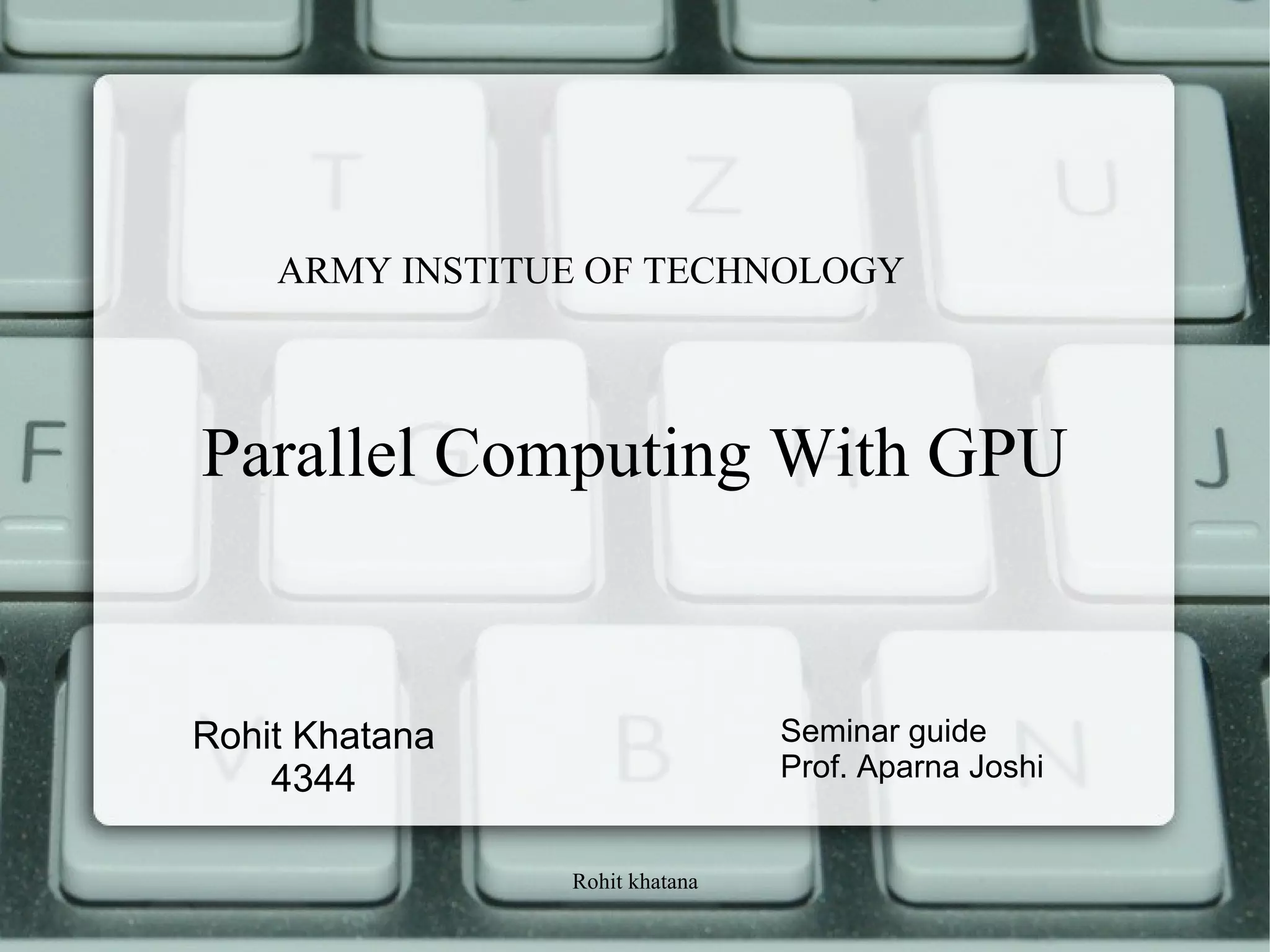
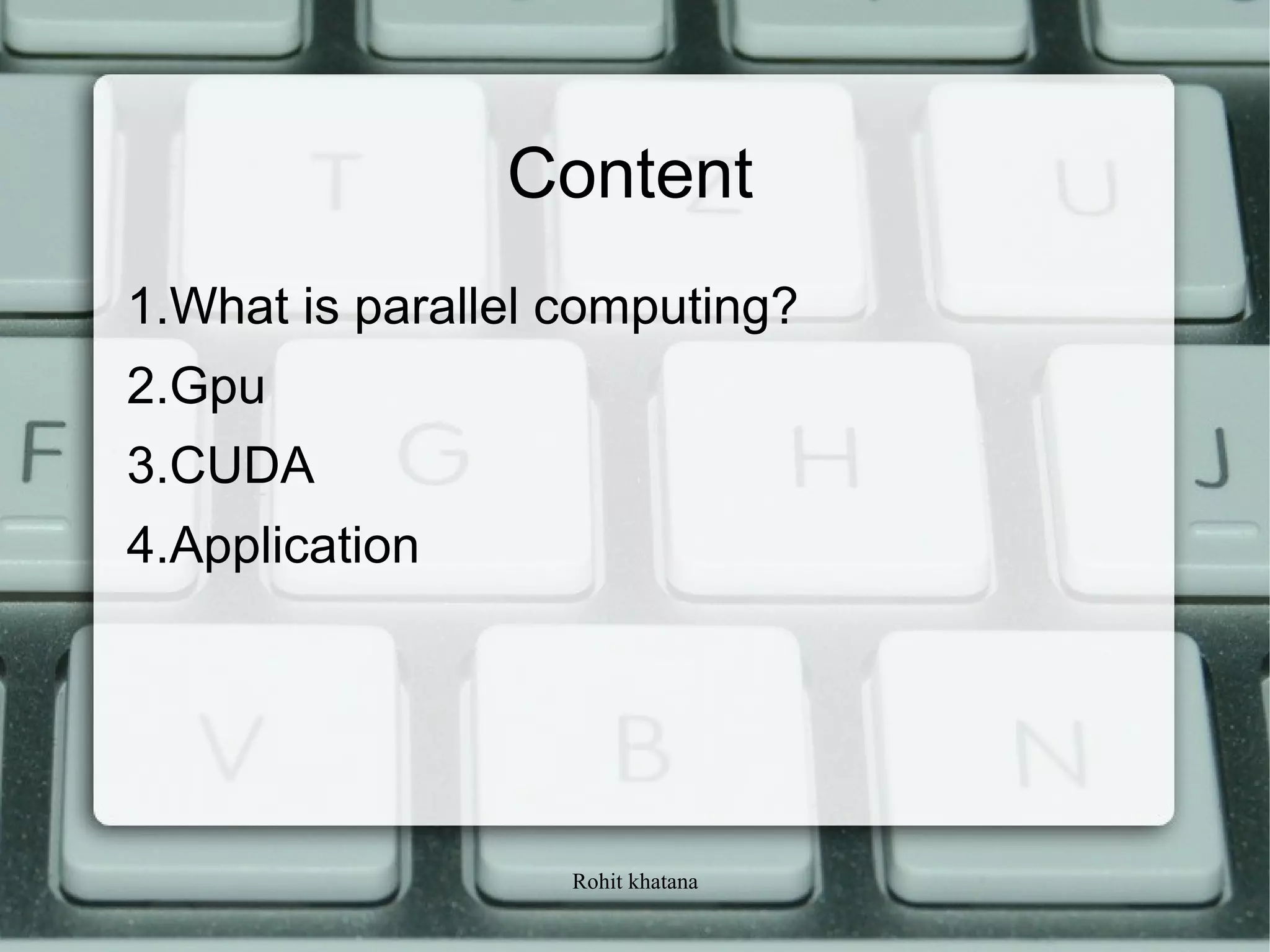
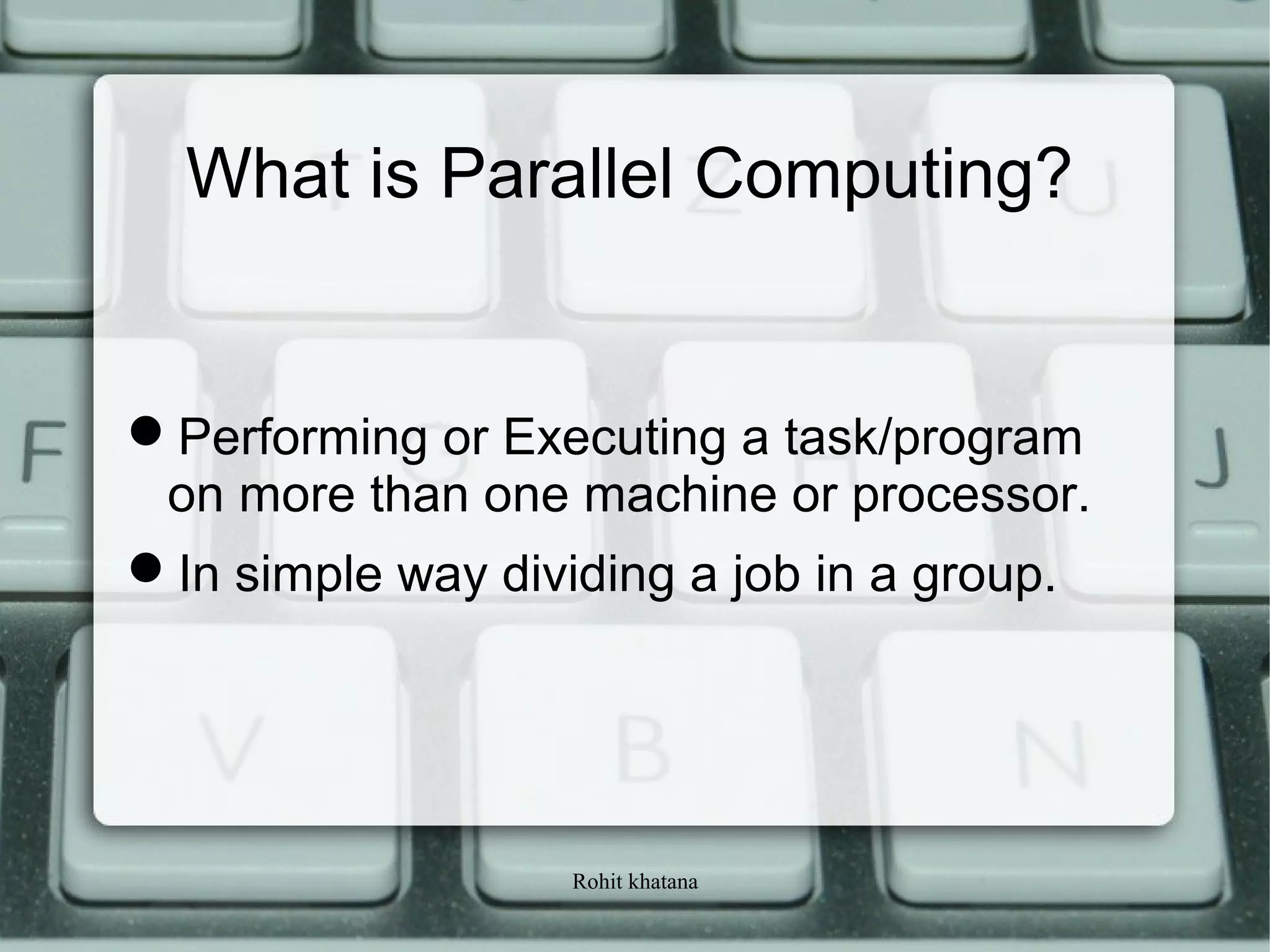
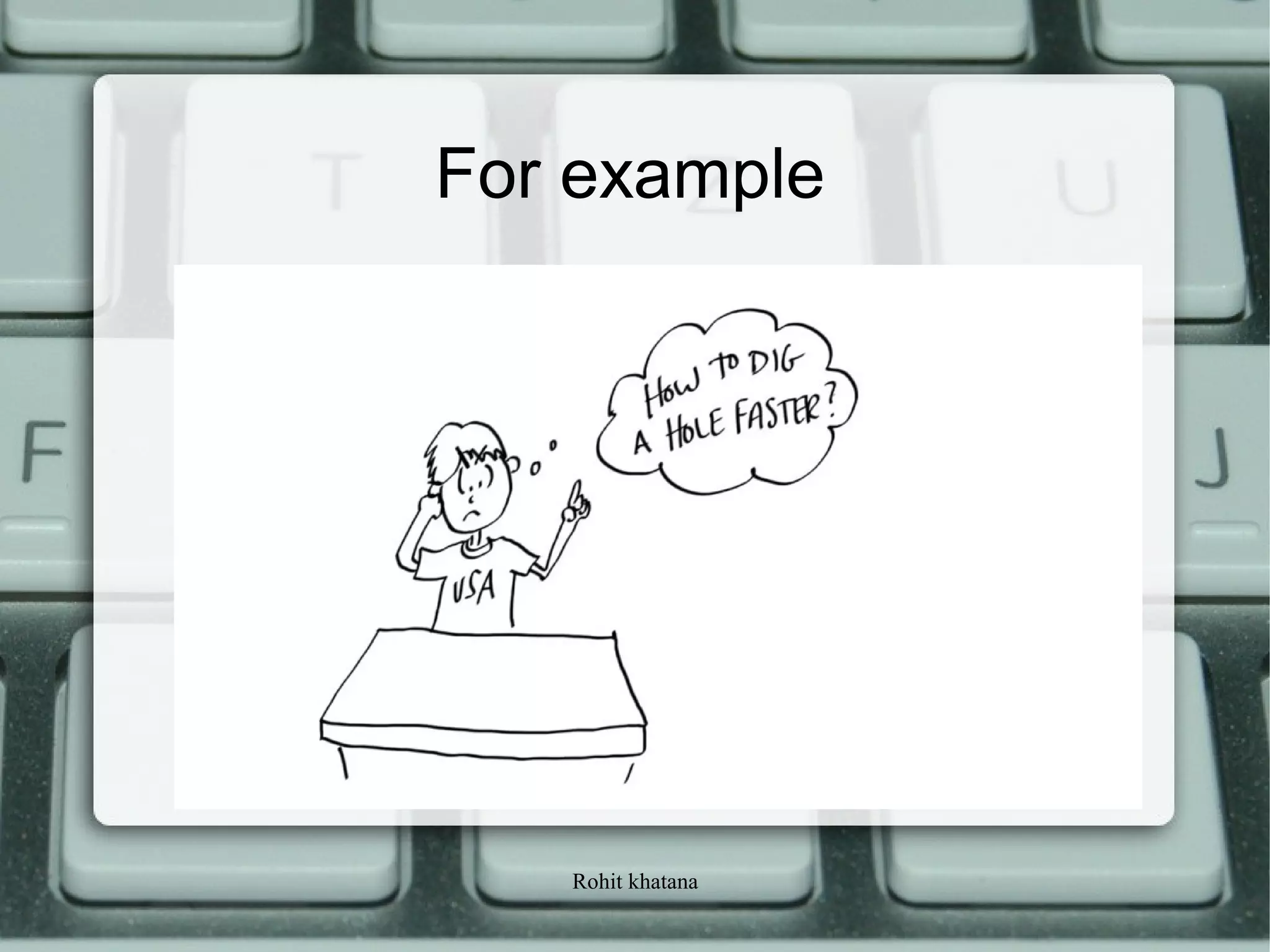
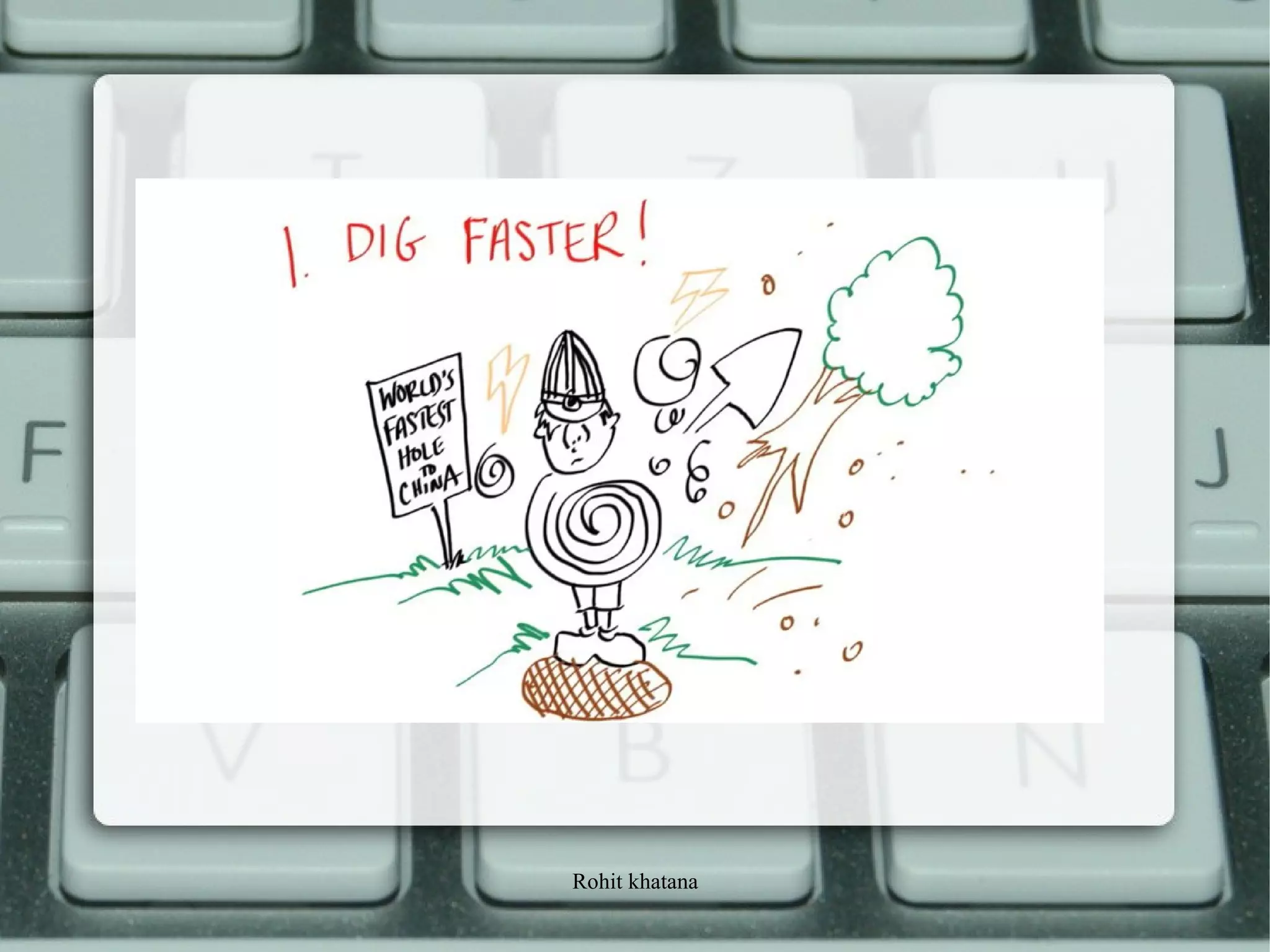


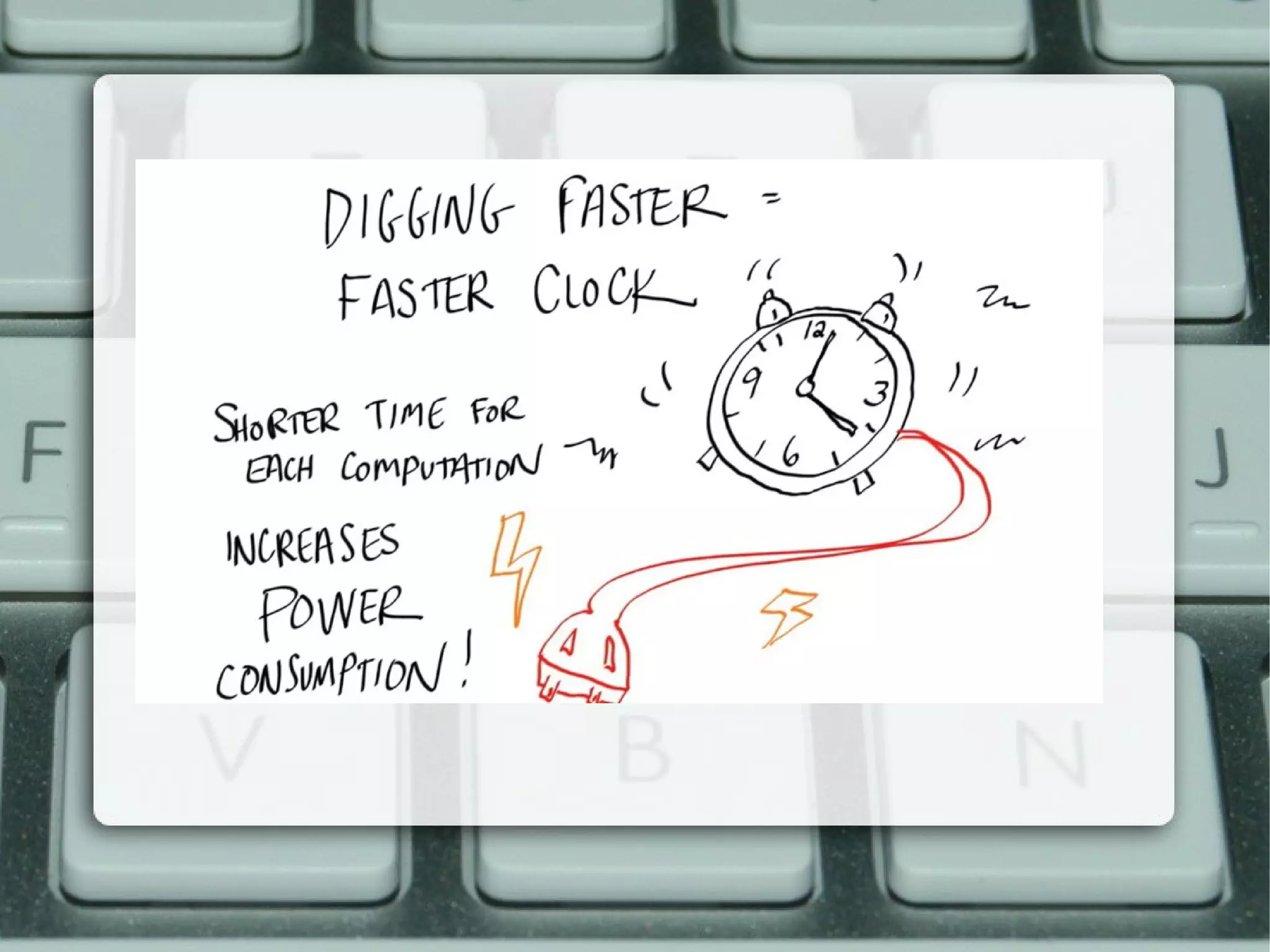

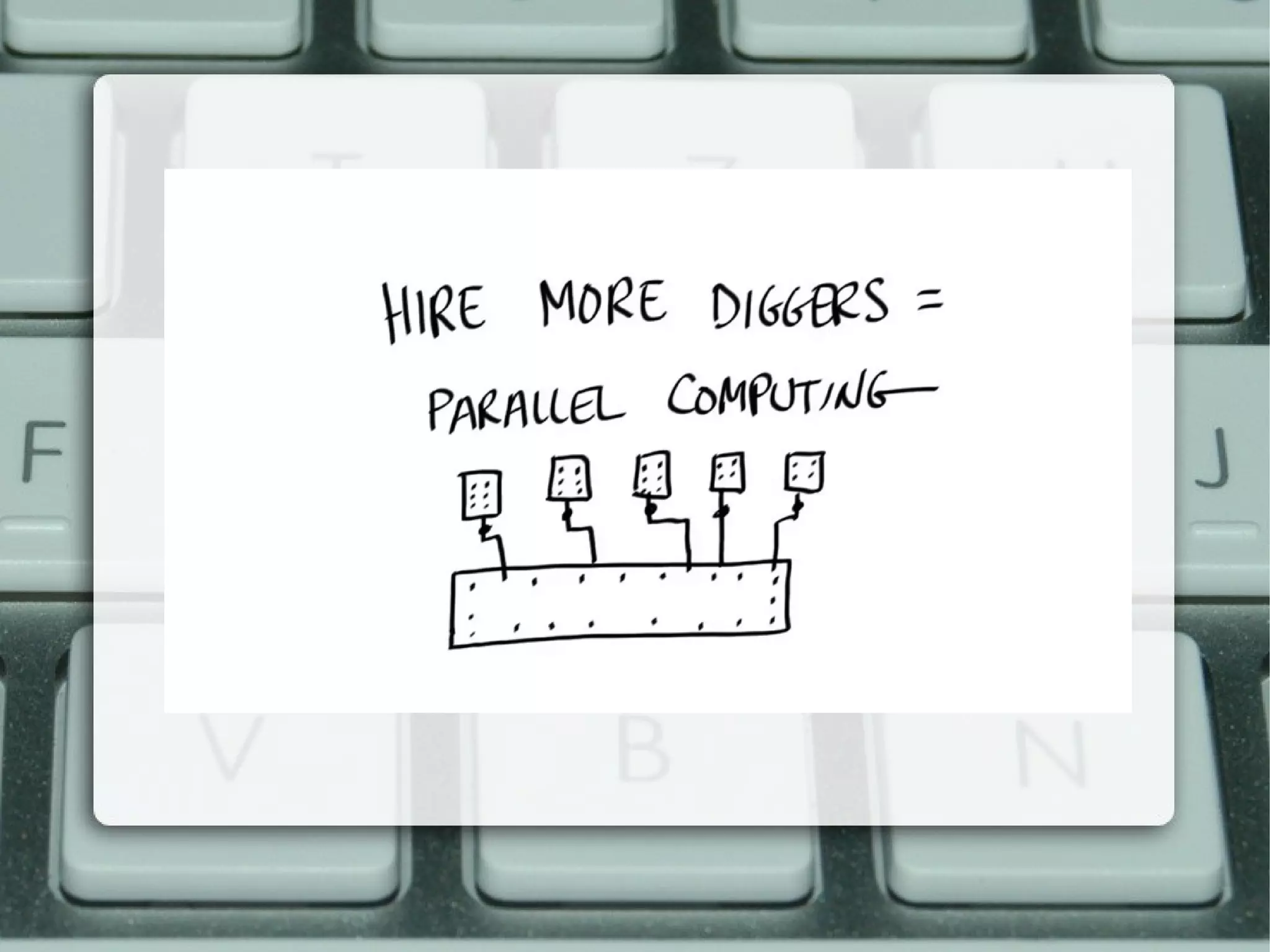
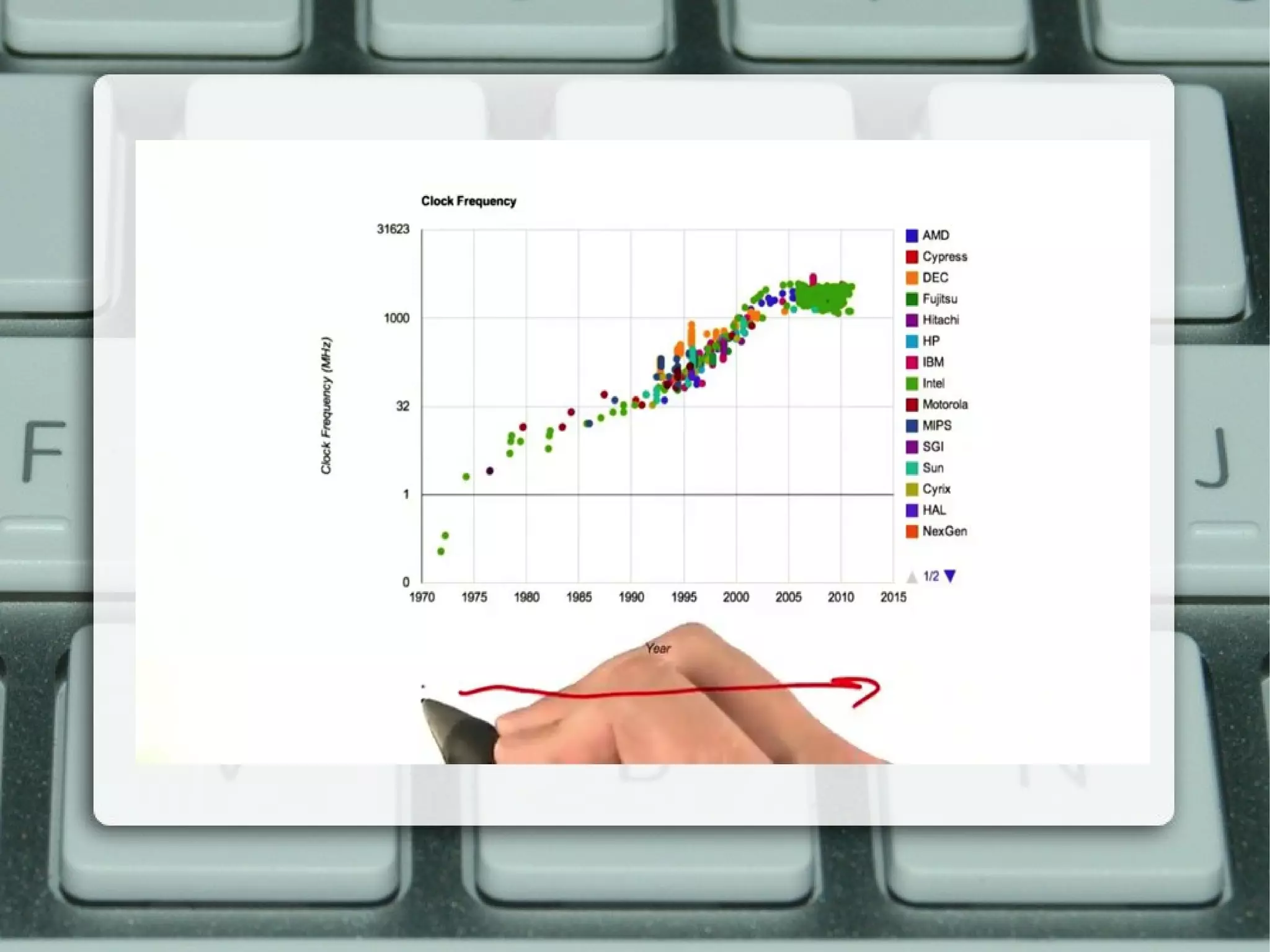
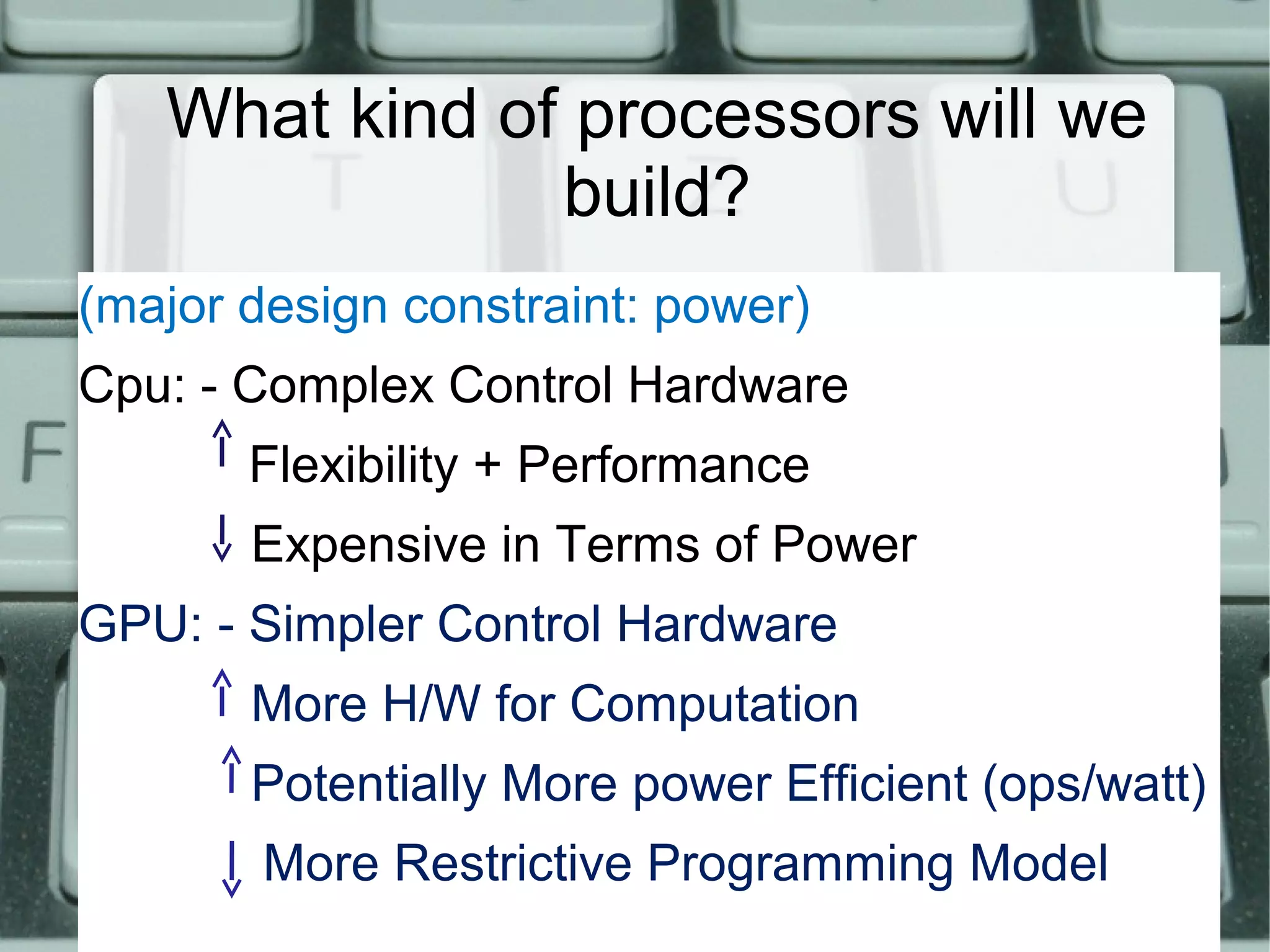
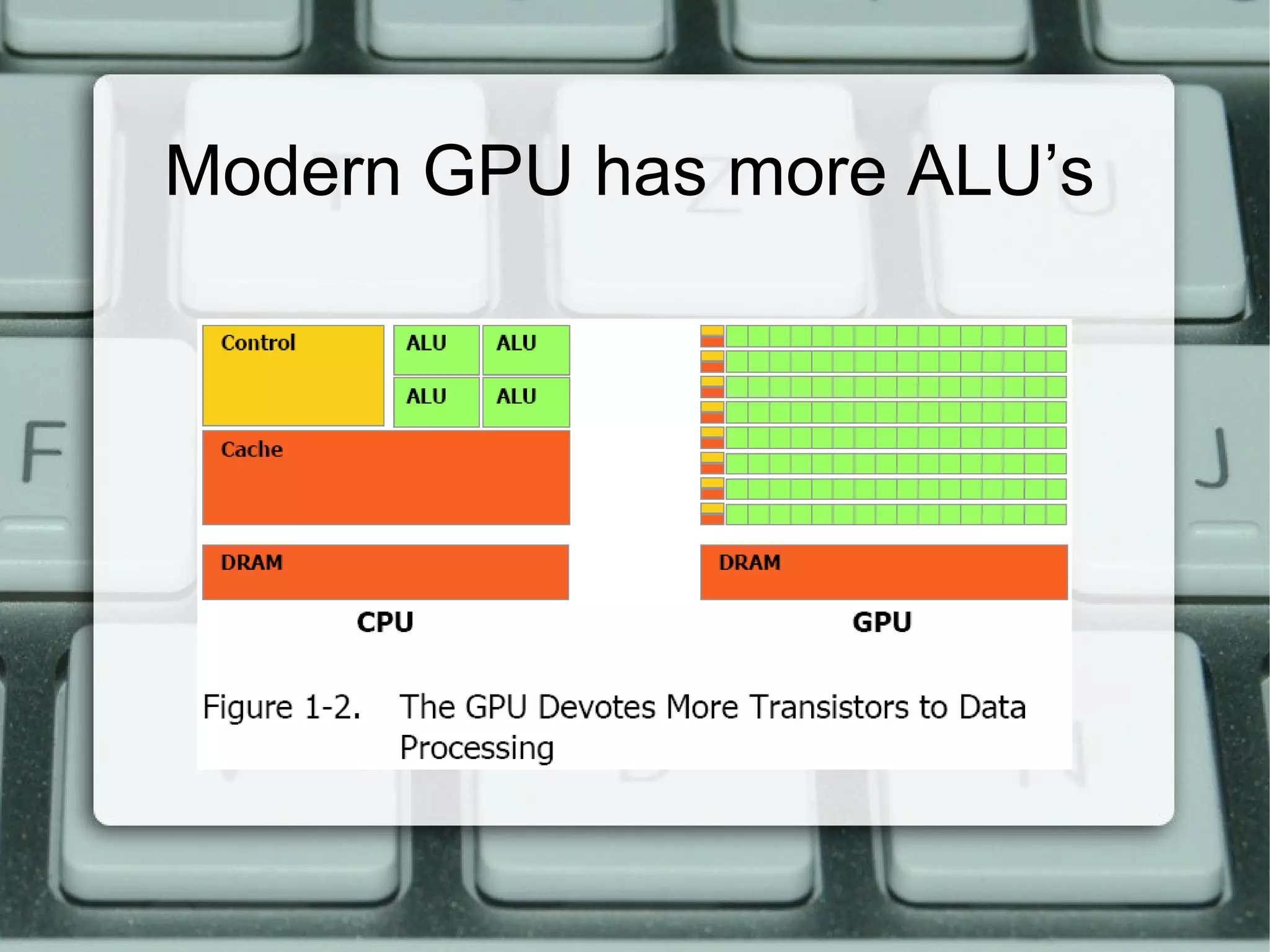
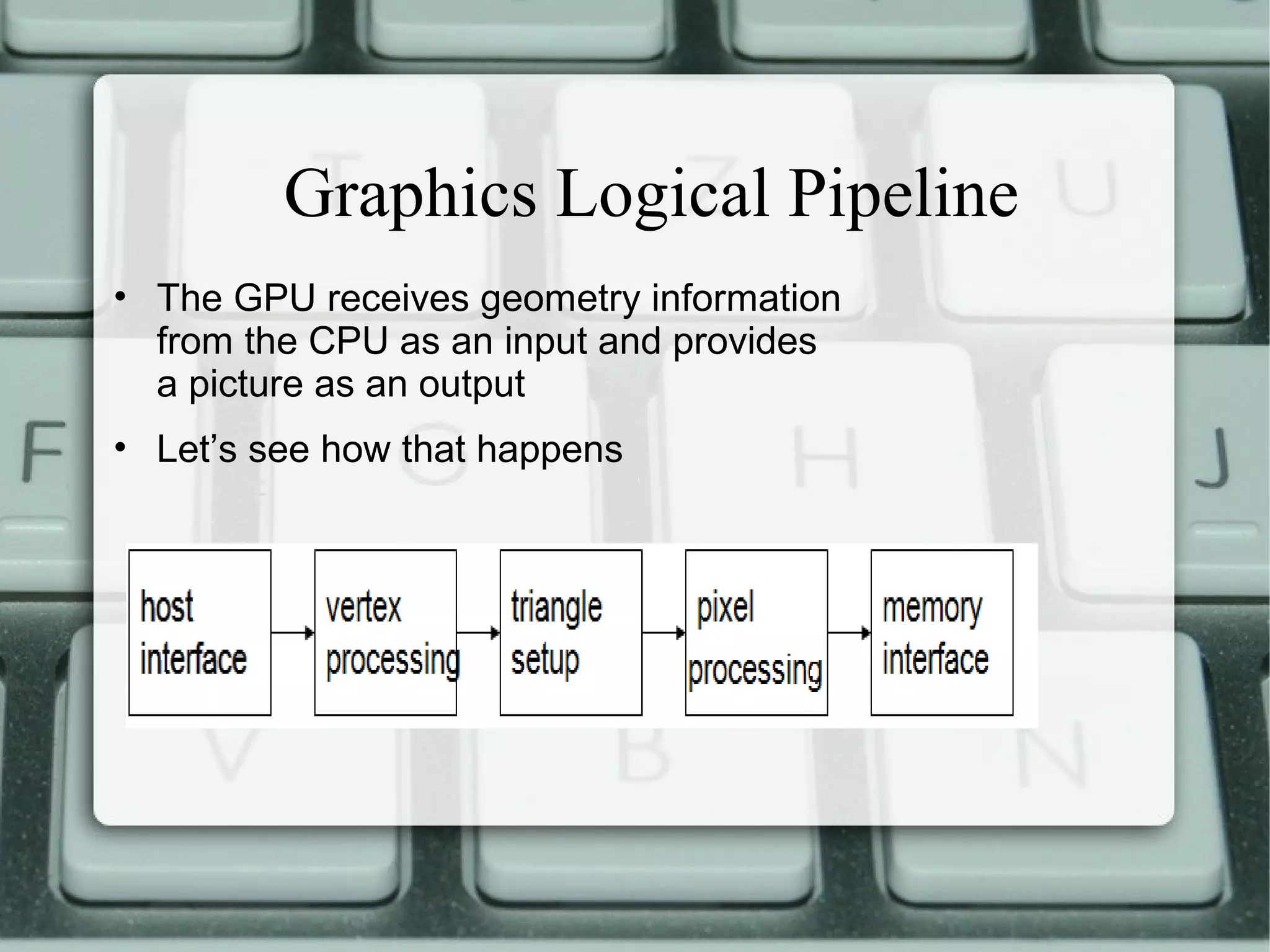
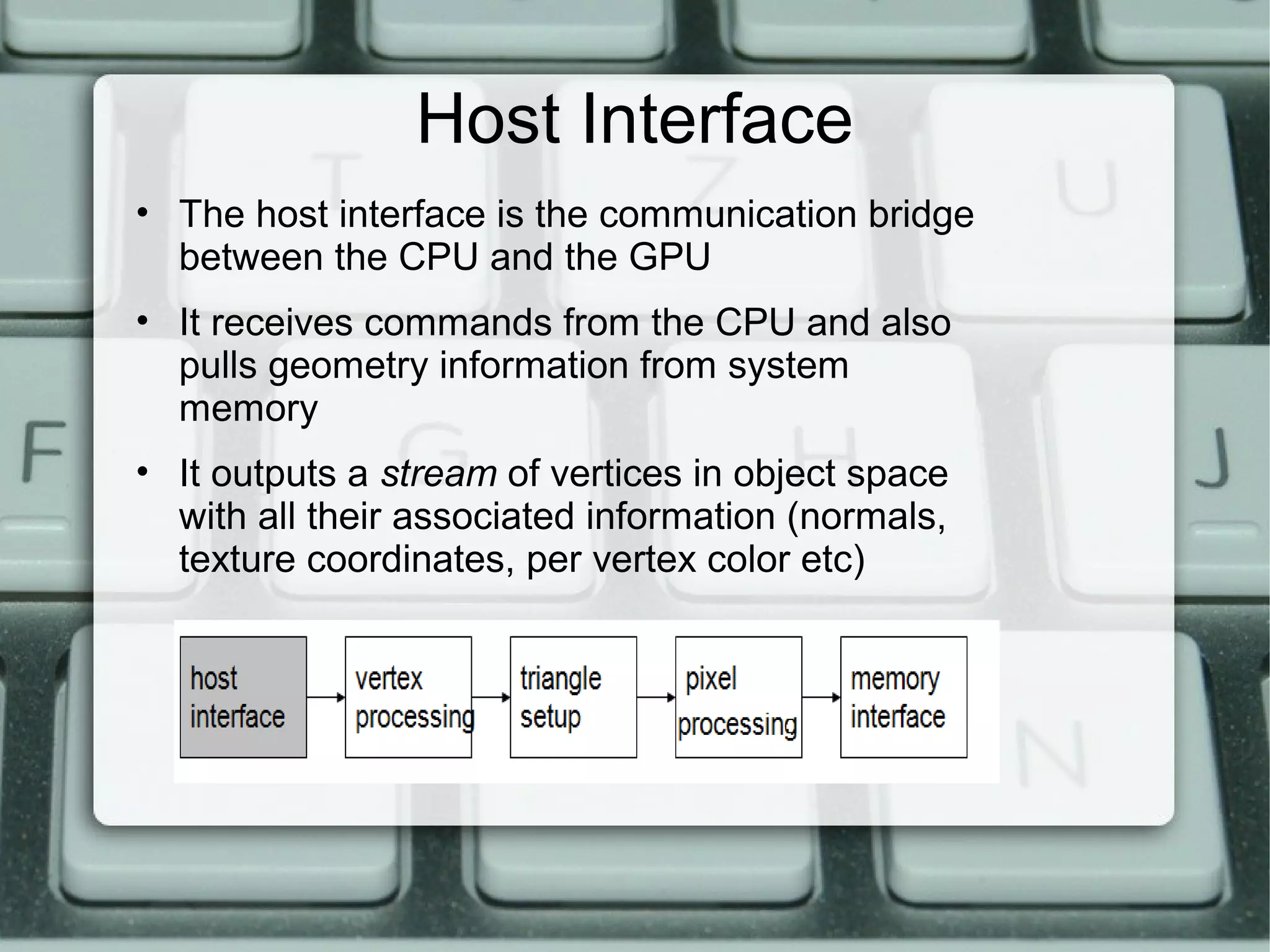
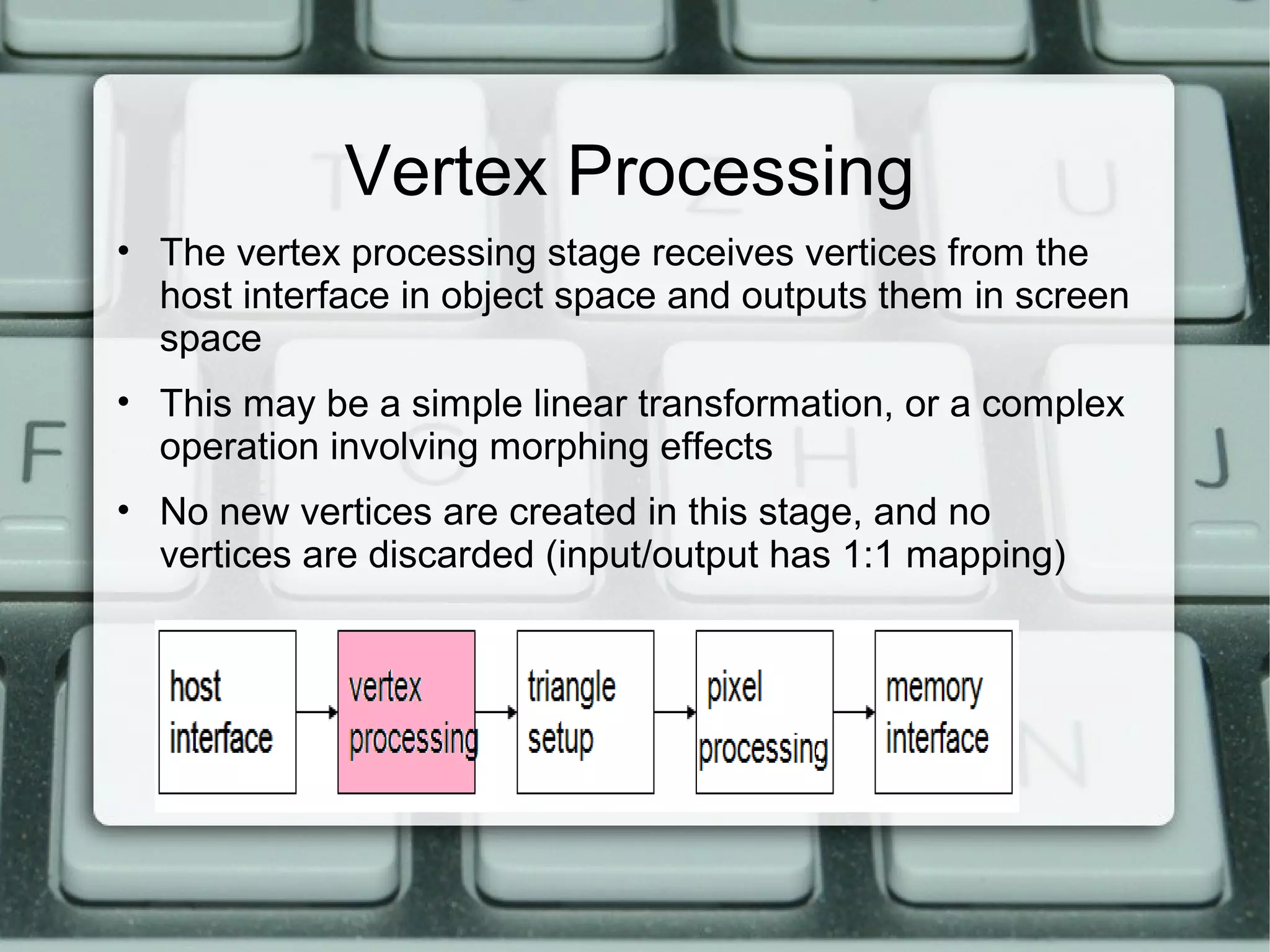
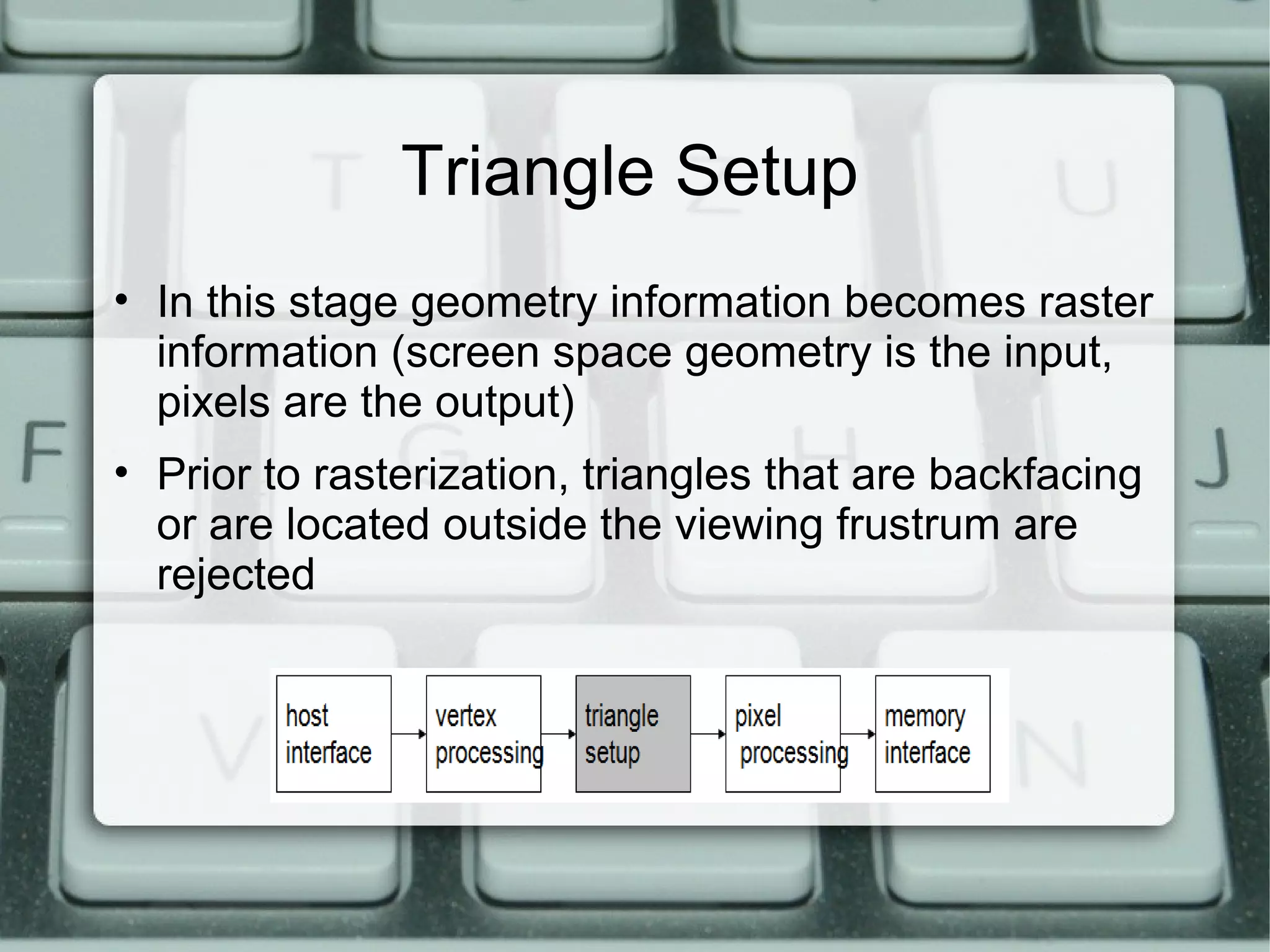
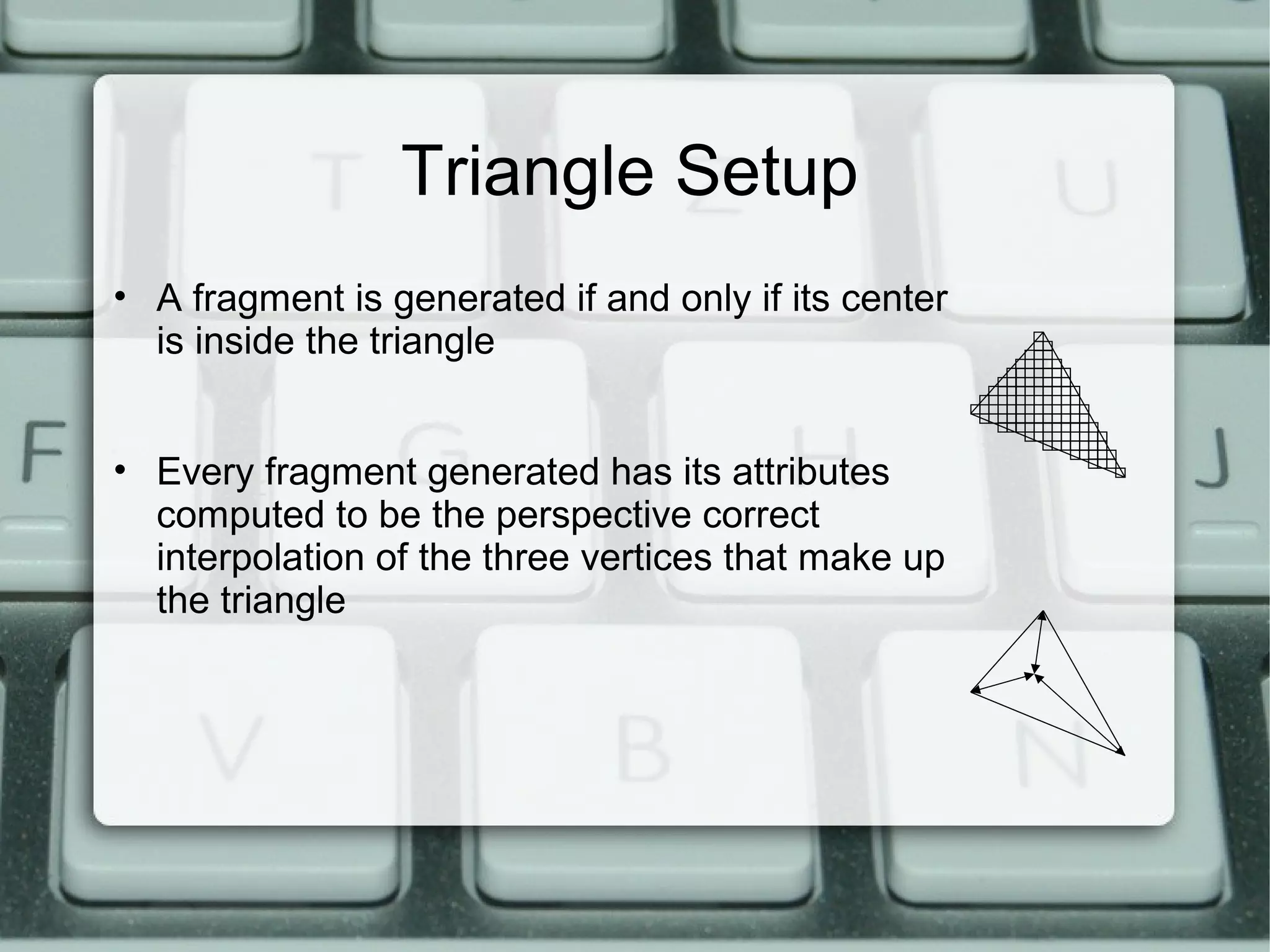
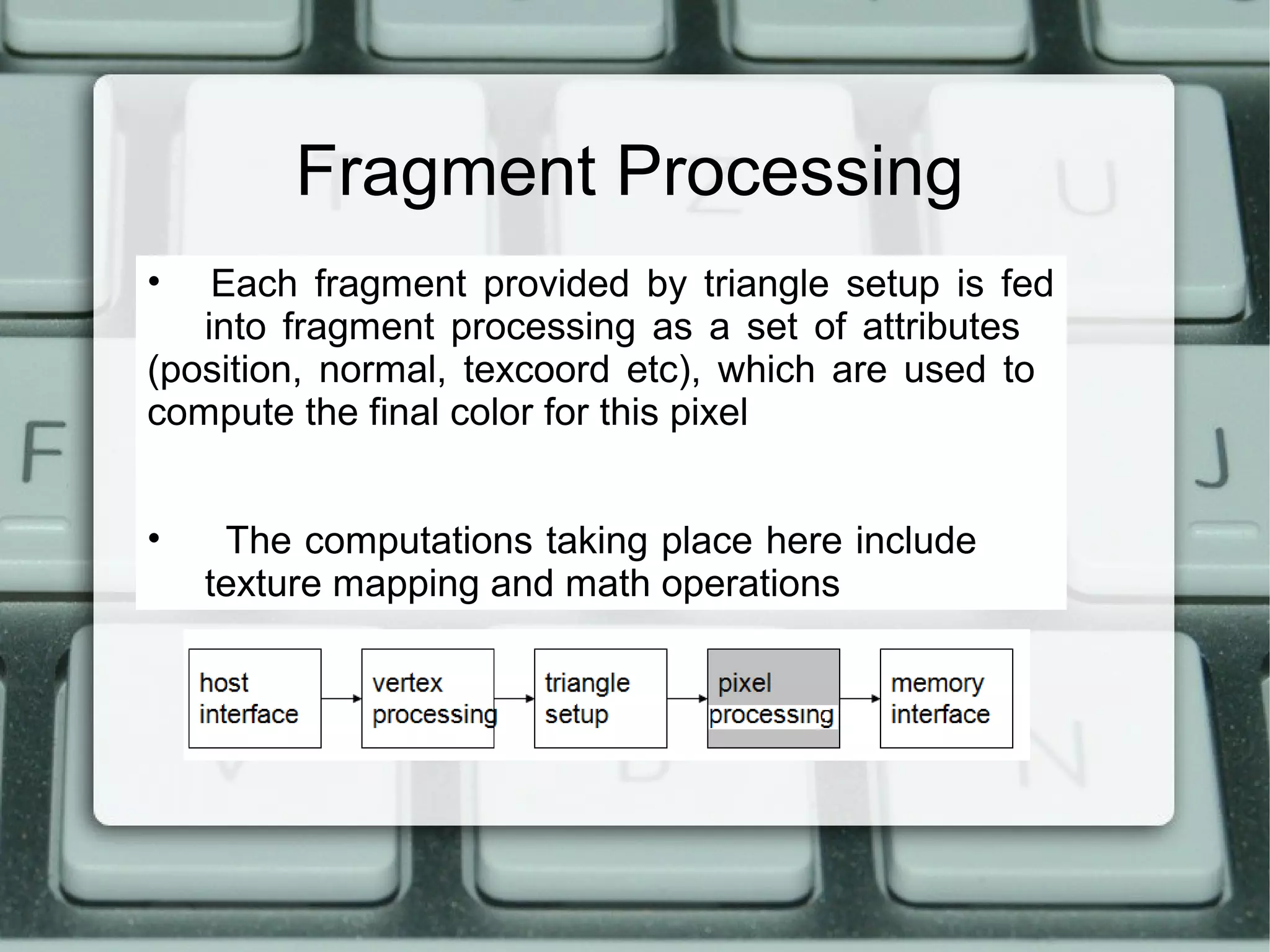
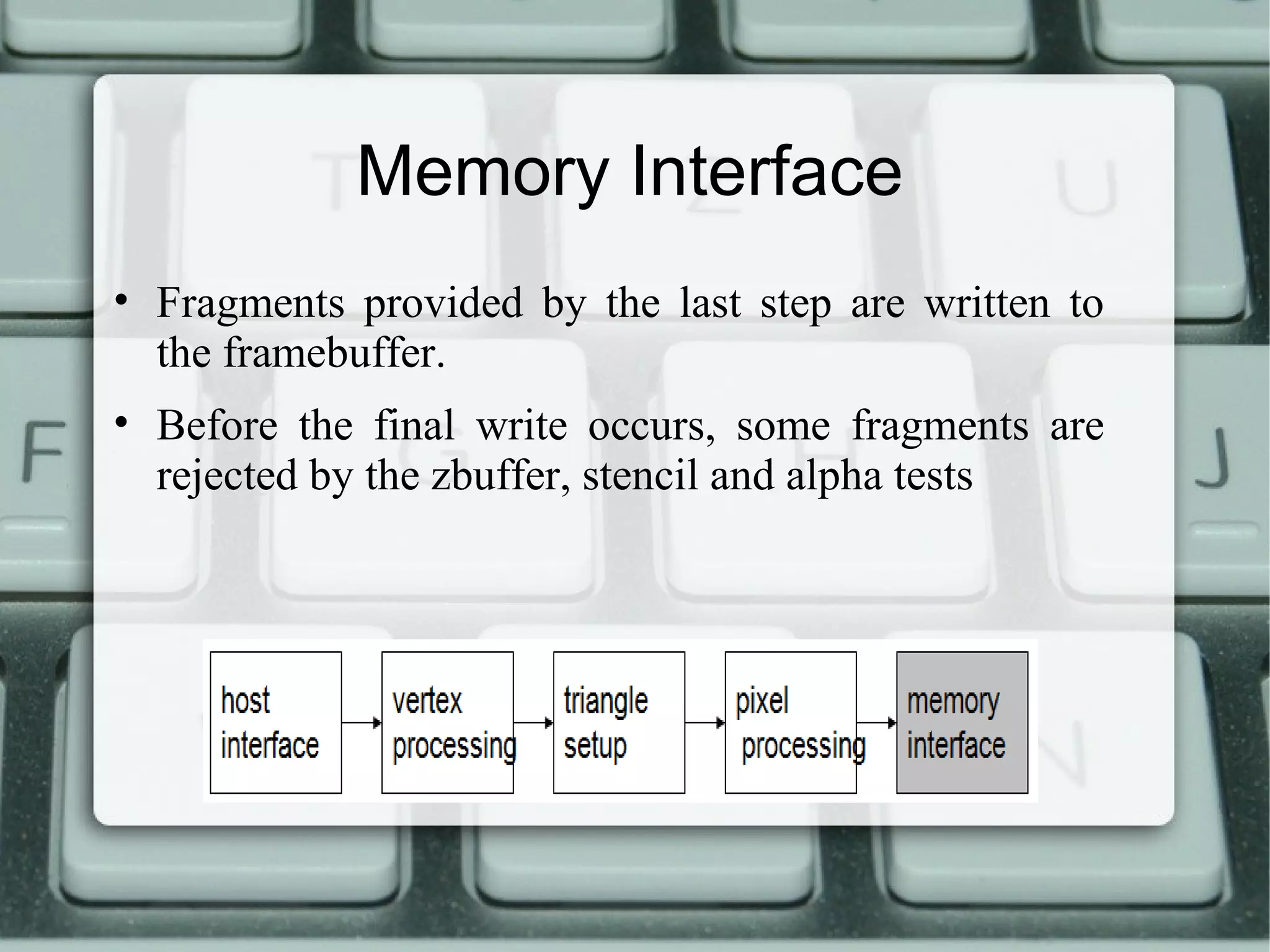
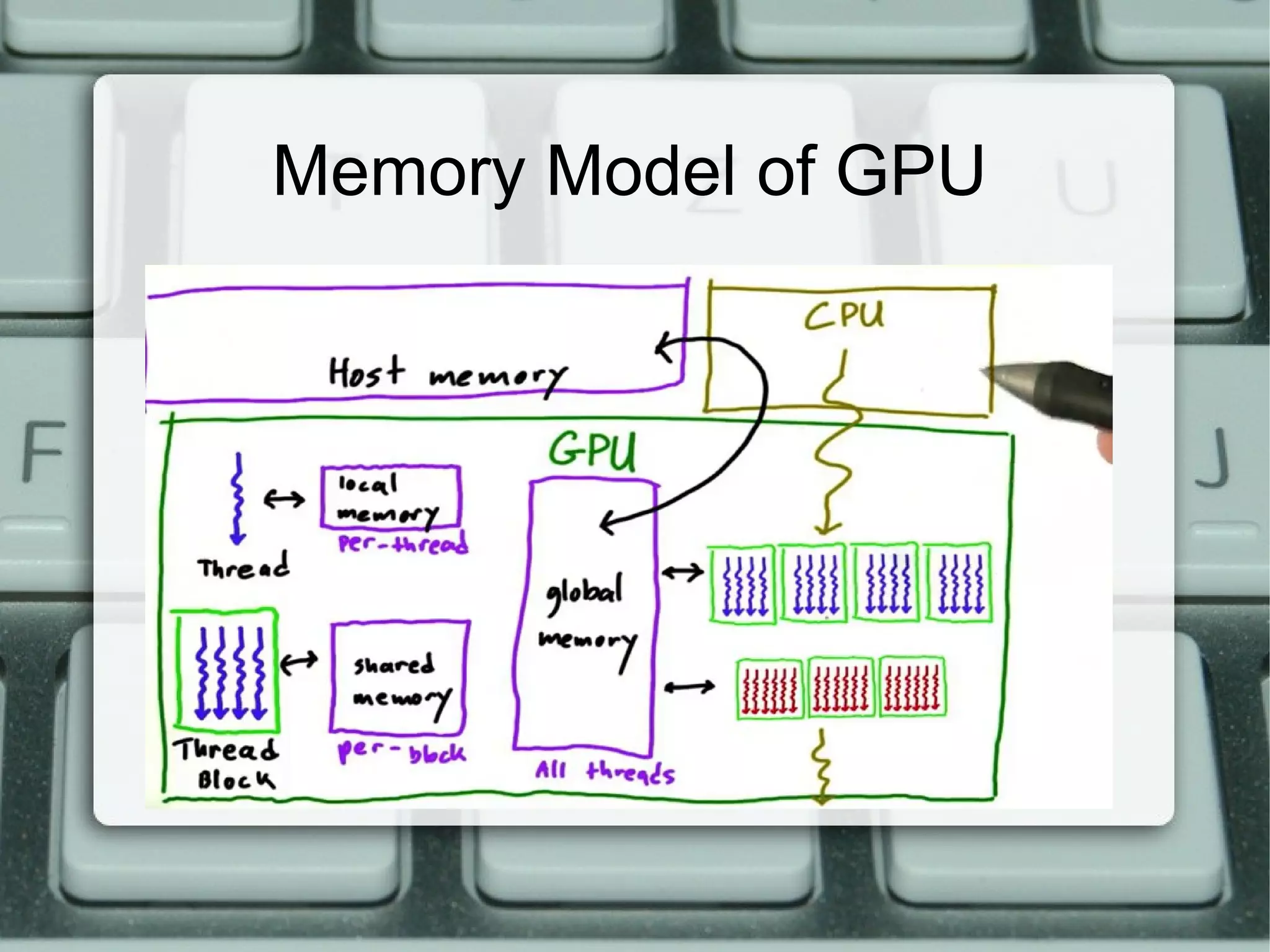
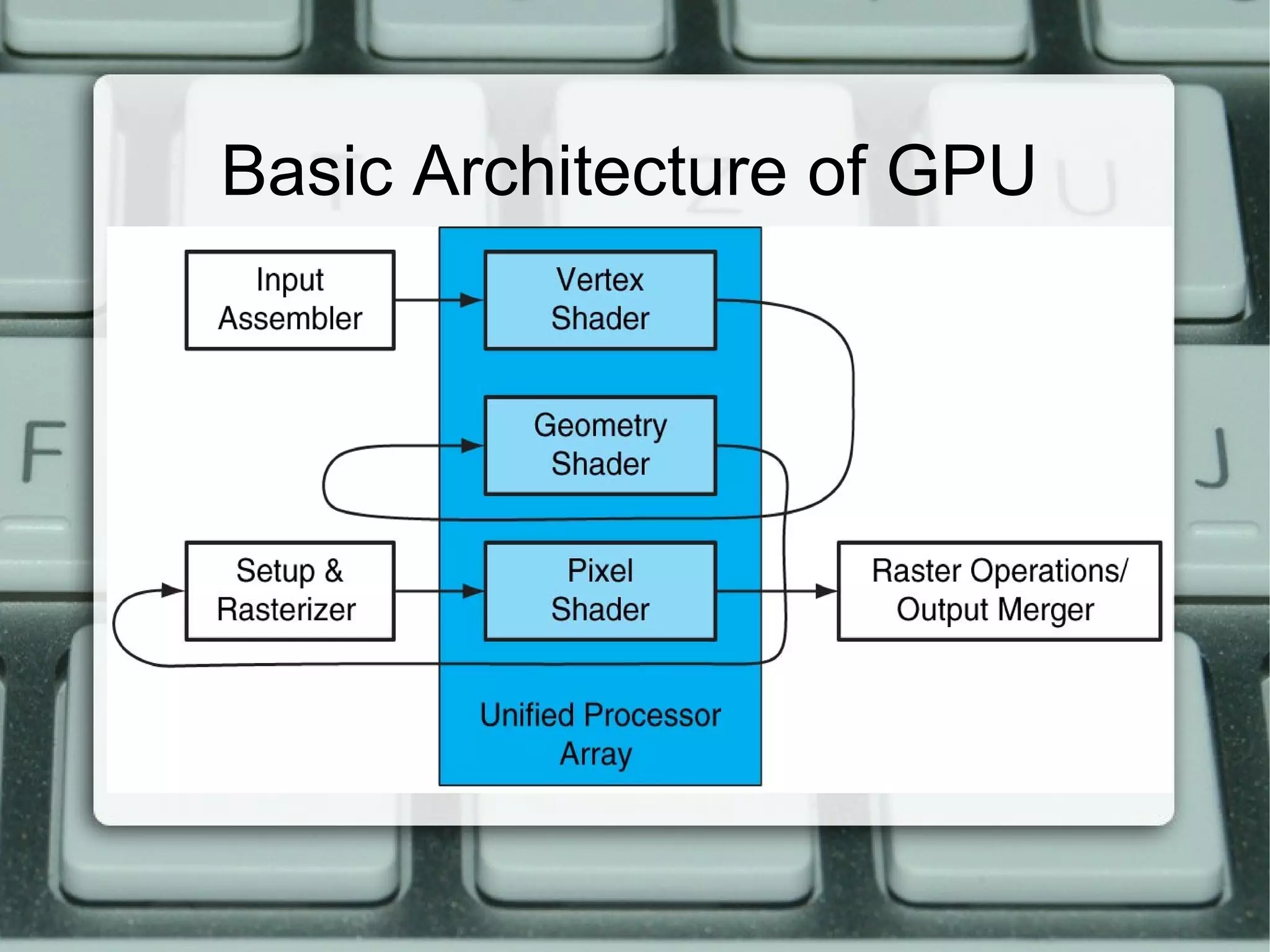
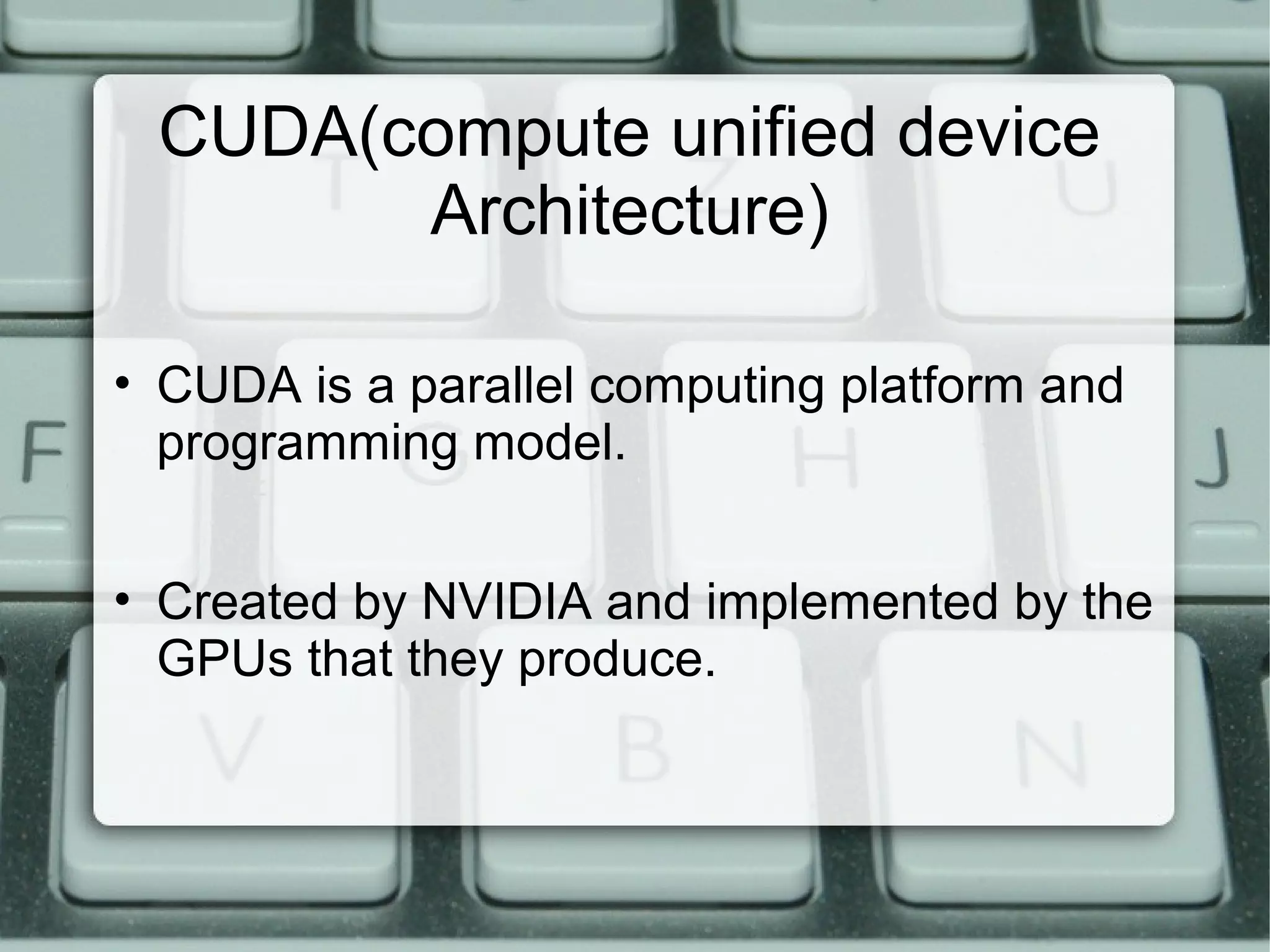
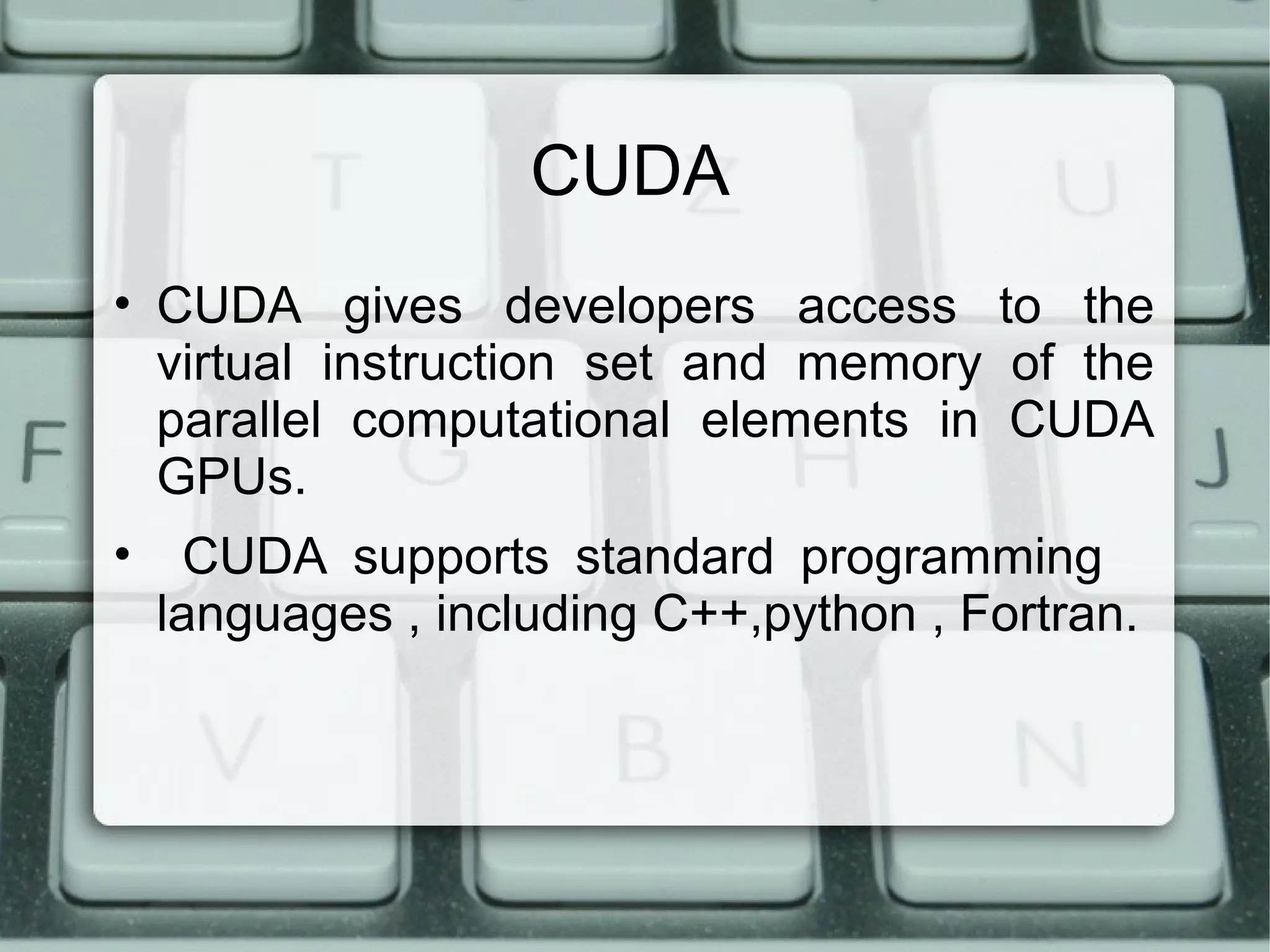
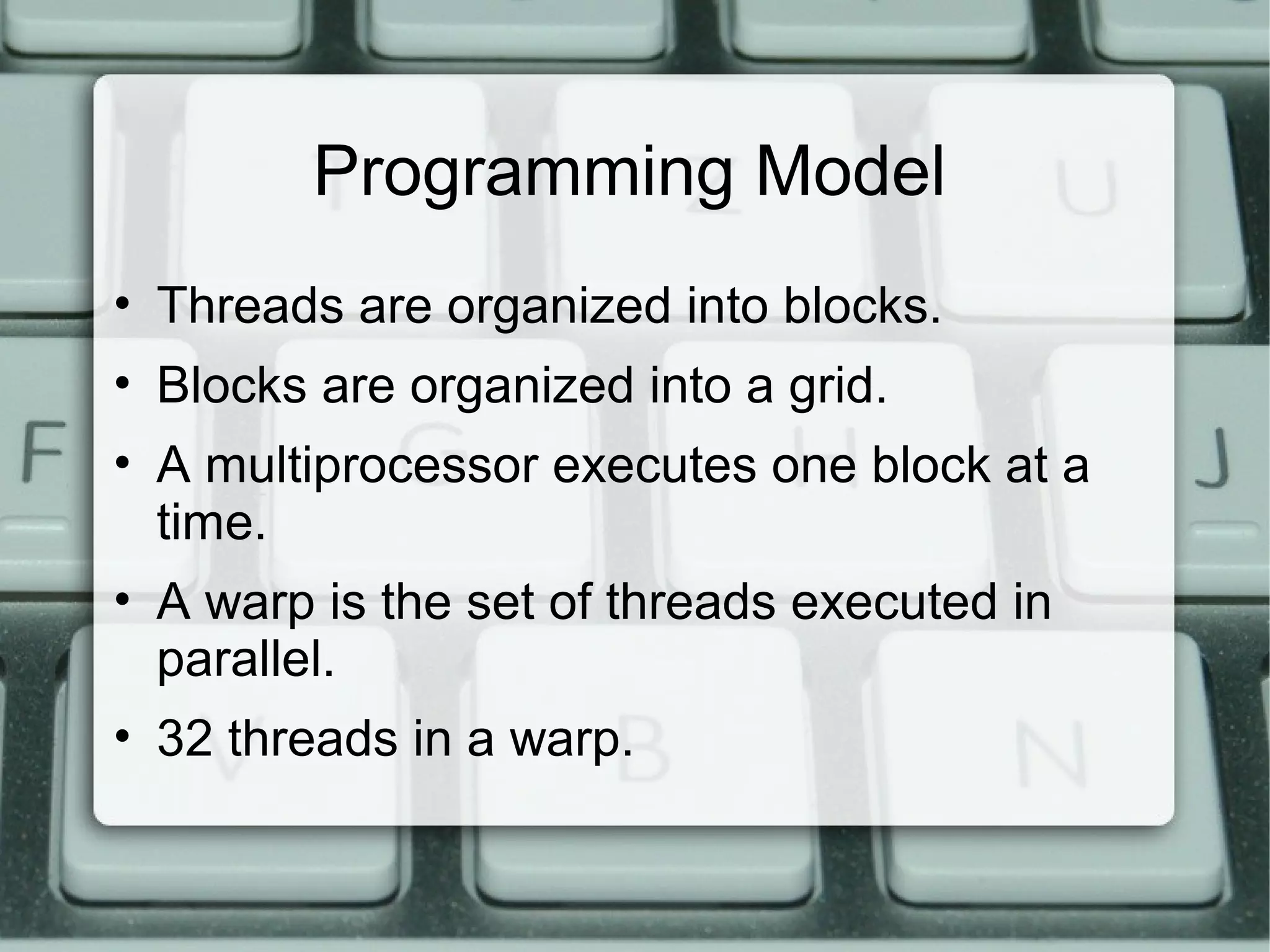
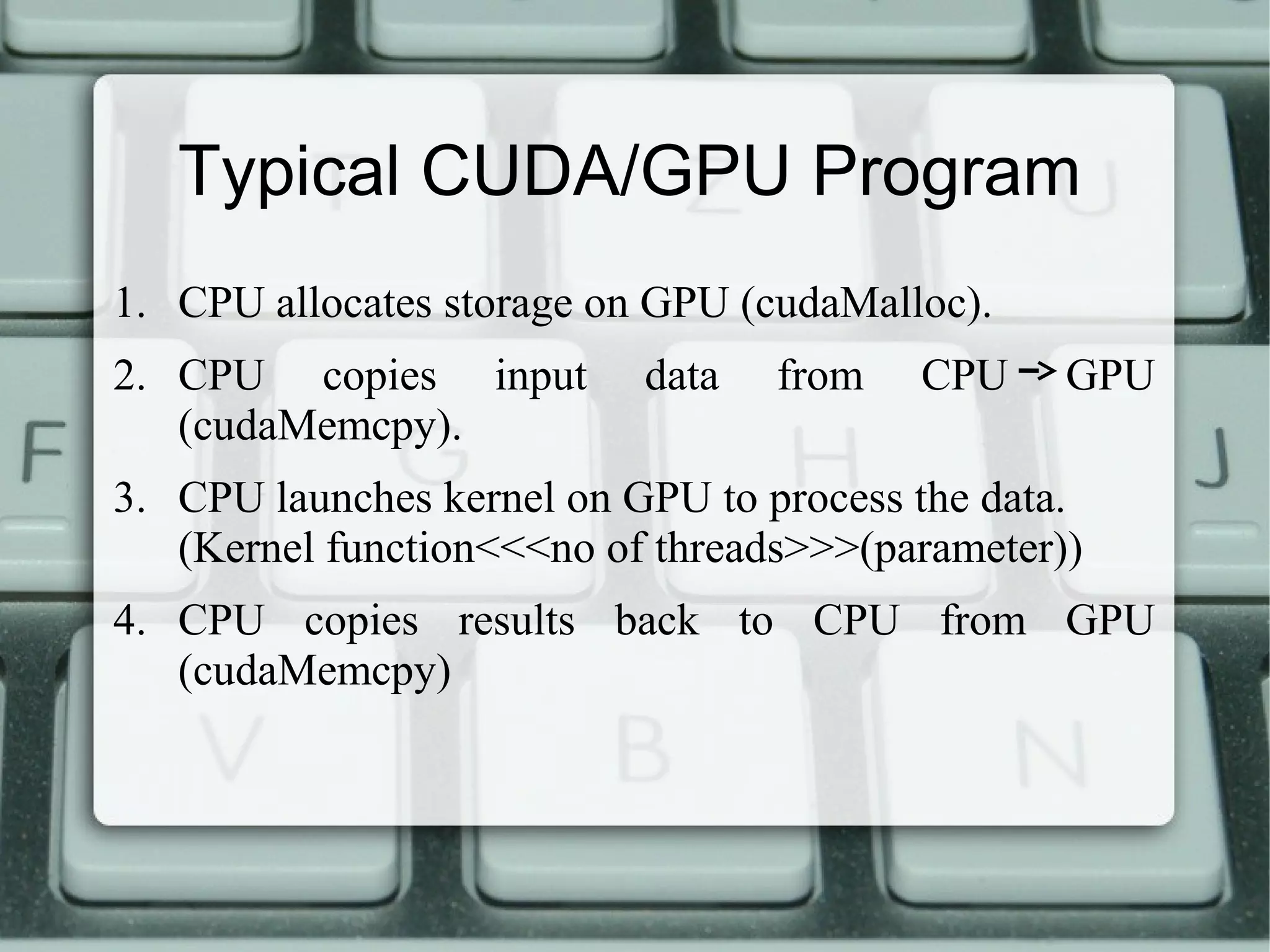
![simply squaring the elements of an array
__global__ void square(float * d_out, float * d_in){
// Todo: Fill in this function
int idx = threadIdx.x;
float f = d_in[idx];
d_out[idx] = f*f
}
theadIdx.x =gives the current thread number
GPU/CUDA programming](https://image.slidesharecdn.com/parallelcomputinggpu-130729221325-phpapp02/75/Parallel-computing-with-Gpu-27-2048.jpg)
![Main program
int main(int argc, char **argv){
……………………
…………………….
float h_out[ARRAY_SIZE];
//declare GPU pointer
float * d_in;
float * d_out;
// allocate GPU memory
cudaMalloc( (void*) &d_in, ARRAY_BYTES);
cudaMalloc( (void*) &d_out, ARRAY_BYTES);](https://image.slidesharecdn.com/parallelcomputinggpu-130729221325-phpapp02/75/Parallel-computing-with-Gpu-28-2048.jpg)
![Main program(cont.)
// transfer the array to the GPU
cudaMemcpy(d_in, h_in, ARRAY_BYTES, cudaMemcpyHostToDevice);
// launch the kernel
square<<<1, ARRAY_SIZE>>>(d_out, d_in);
// copy back the result array to the CPU
cudaMemcpy(h_out, d_out, ARRAY_BYTES, cudaMemcpyDeviceToHost);
// print out the resulting array
for (int i =0; i < ARRAY_SIZE; i++) {
printf("%f", h_out[i]);
}](https://image.slidesharecdn.com/parallelcomputinggpu-130729221325-phpapp02/75/Parallel-computing-with-Gpu-29-2048.jpg)
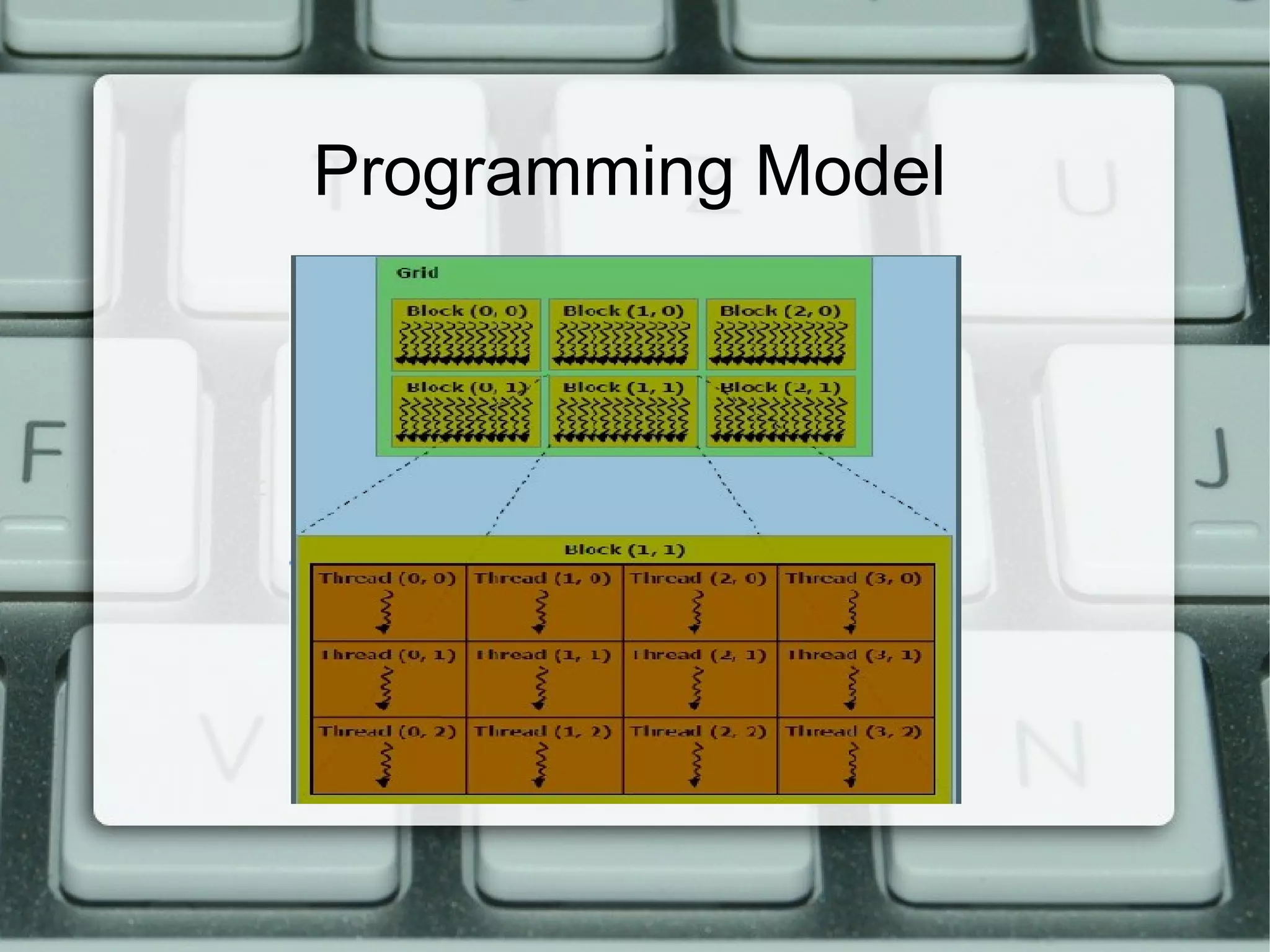
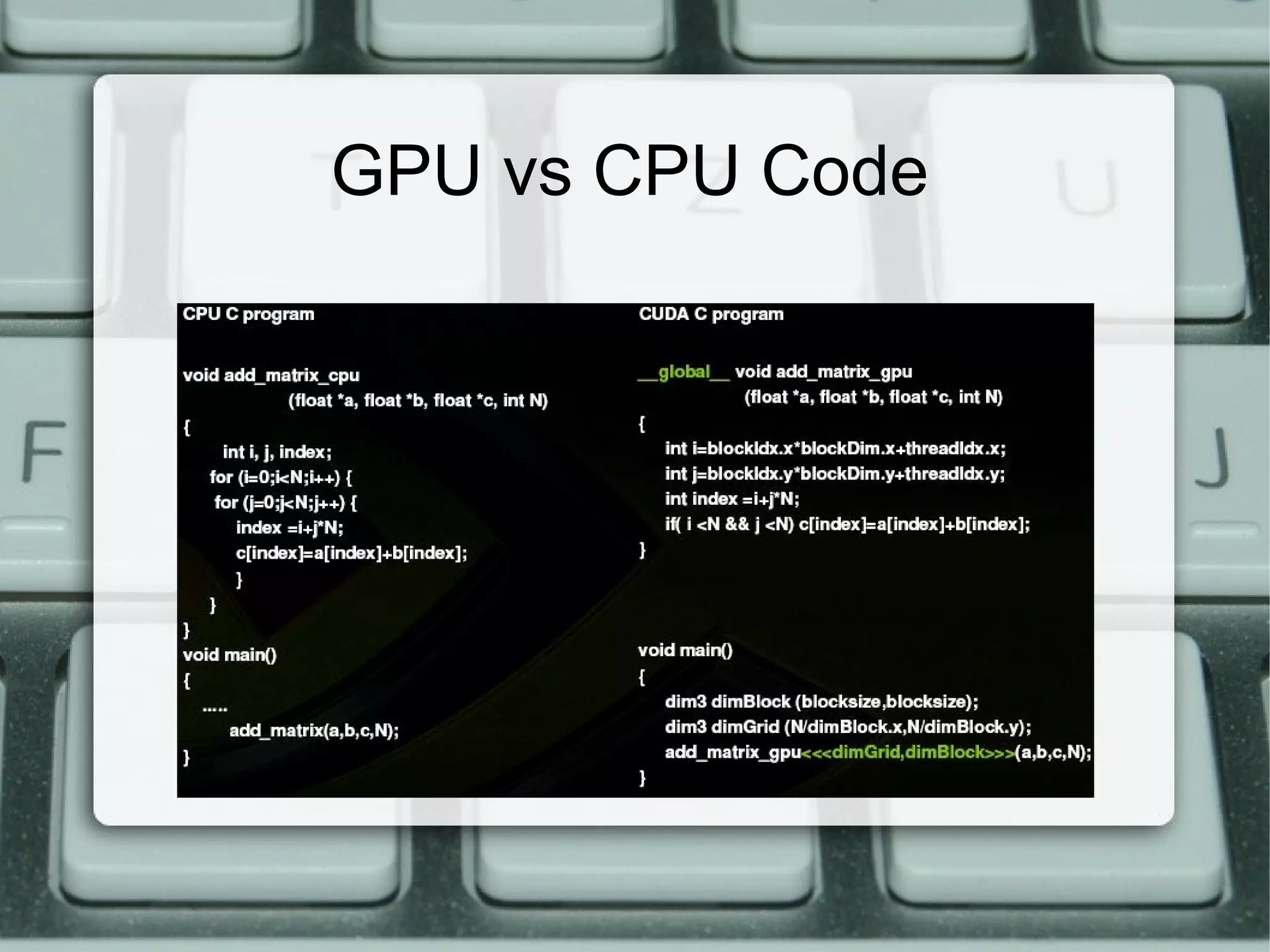
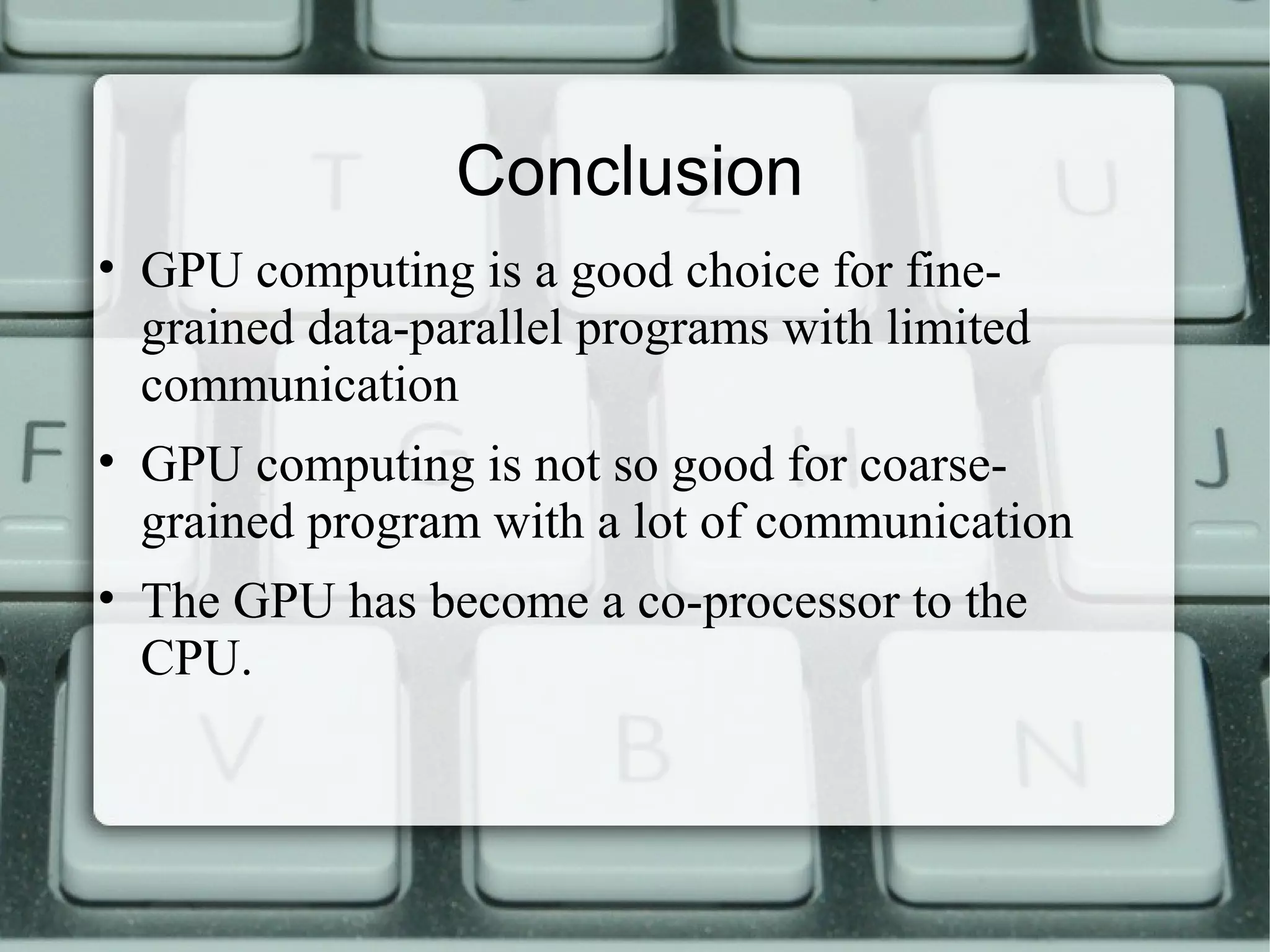
![References
• 1.[‘IEEE’] Accelerating image processing capability using
graphics processors Jason. Dalea, Gordon. Caina, Brad.
ZellbaVision4ce Ltd. Crowthorne Enterprise Center,
Crowthorne, Berkshire, UK, RG45 6AWbVision4ce LLC
Severna Park, USA, MD2114
•
• 2.Udacity cs344,Intro to parallel Programming with GPU
• 3.Wikipedia
• 4.Nividia docs](https://image.slidesharecdn.com/parallelcomputinggpu-130729221325-phpapp02/75/Parallel-computing-with-Gpu-33-2048.jpg)